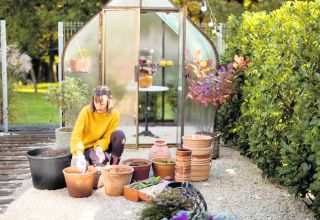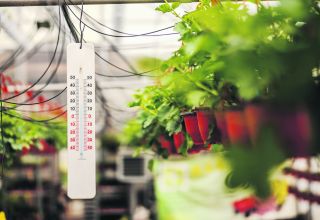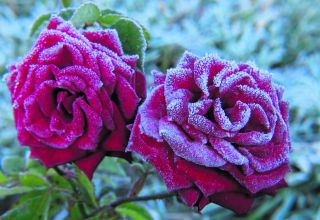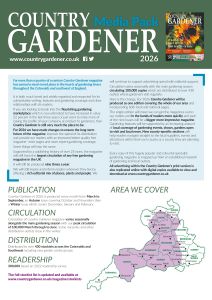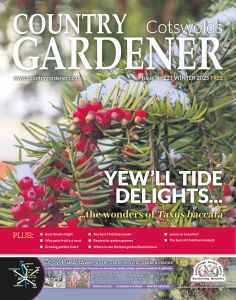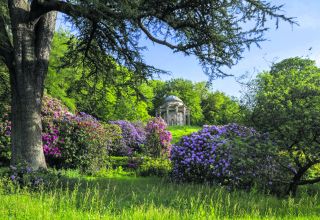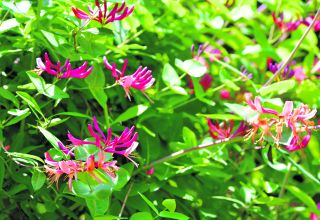
These fabulously colourful plants, also known as woodbines provide the most powerful scent and are a magnet for wildlife.
With distinctive, bugle-shaped flowers giving off a powerful scent and lush foliage, it’s no wonder that honeysuckles are so popular amongst gardeners. Also known as woodbine, these woodland and hedgerow plants are vigorous climbers with clusters of scented flowers which attract bees and butterflies in summer followed by berries for the birds in the autumn.
They are a must for any garden arch, pergola or fence and often grow better on these than roses.
Climbing honeysuckles flower in summer, in shades of white, cream, lemon yellow, pink, orange and raspberry red. They’re perfect plants for an informal or cottage garden style, and look good combined with roses for a romantic display. They are also a magnet for wildlife. The scent of their nectar-rich flowers attracts bees and butterflies during the day and moths at night – their colour changes slightly once pollinated.
Growing honeysuckle
Grow climbing honeysuckles in moist but free-draining soil in partial shade, ideally with the roots in shade but the stems in sun, such as at the base of a west-facing wall or fence. Give them a sturdy frame to climb up, such as a trellis or wire frame.
Water plants in dry spells and feed with a general purpose fertiliser in spring.
Deciduous honeysuckles are best planted in late winter, evergreen honeysuckles in spring or autumn.
When planting any honeysuckle, dig in some well-rotted organic matter, such as garden compost or well rotted manure, into the soil before planting. Dig a hole that is the same size as the rootball, and plant at the same depth as the plant was in the pot. Firm in wall, water deeply and finally mulch with organic matter to help with water retention.
Many shrubby honeysuckles can be planted as cheaper, bare-root plants in autumn or winter. For a dense hedge, plant five small plants per metre.
Caring for honeysuckle
Water all honeysuckles in dry spells in summer. Feed with a general-purpose fertiliser in spring to promote good growth and plenty of flowers.
Beware of the ‘rain shadow’ that can occur at the base of walls and fences, where rain doesn’t reach the soil. Mulching around the base of climbing honeysuckles in spring with well-rotted manure or garden compost can help to retain moisture.
Honeysuckle pruning depends on the type of honeysuckle you are growing – climbing or shrubby.
Climbing honeysuckles
Those that flower early in the summer should be pruned after flowering. Cut back by about one third to maintain a neat shape. Don’t remove the dying flowerheads as these will become berries. Those that flower later in the summer should be pruned lightly in spring. These flower on the current season’s growth, so don’t cut back too hard or you’ll risk losing the flowers.
Shrubby honeysuckles
Deciduous shrubby honeysuckles can be pruned after flowering in late spring or summer. If your plant is very overgrown, you can cut it back hard in late winter or early spring.
Problem solving
Honeysuckle aphid can be a real problem for climbing honeysuckles. Leaves become distorted and curled as the sucking insects feed on the plant. The aphids excrete honeydew, which then leads to sooty mould. Plants that are in poor health are more prone to infestation.
Honeysuckles can also be prone to powdery mildew – again, growing in partial shade can help prevent this, as can mulching around the base in spring.
Chosing your honeysuckle
Lonicera periclymenum ‘Serotina’ is a vigorous, deciduous honeysuckle climber with scented, creamy-white flowers that are streaked with raspberry red. It holds the RHS Award of Garden Merit (AGM).
Lonicera periclymenum ‘Scentsation’, as its name suggests, has strongly scented flowers in shades of white and pale yellow, from midsummer to September.
Lonicera ‘Mandarin’ is a new variety with striking but unscented orange flowers from June to August. It is a vigorous, deciduous climber. The new foliage is a rich-bronze colour, before maturing to deep green. It holds the RHS Award of Garden Merit (AGM).
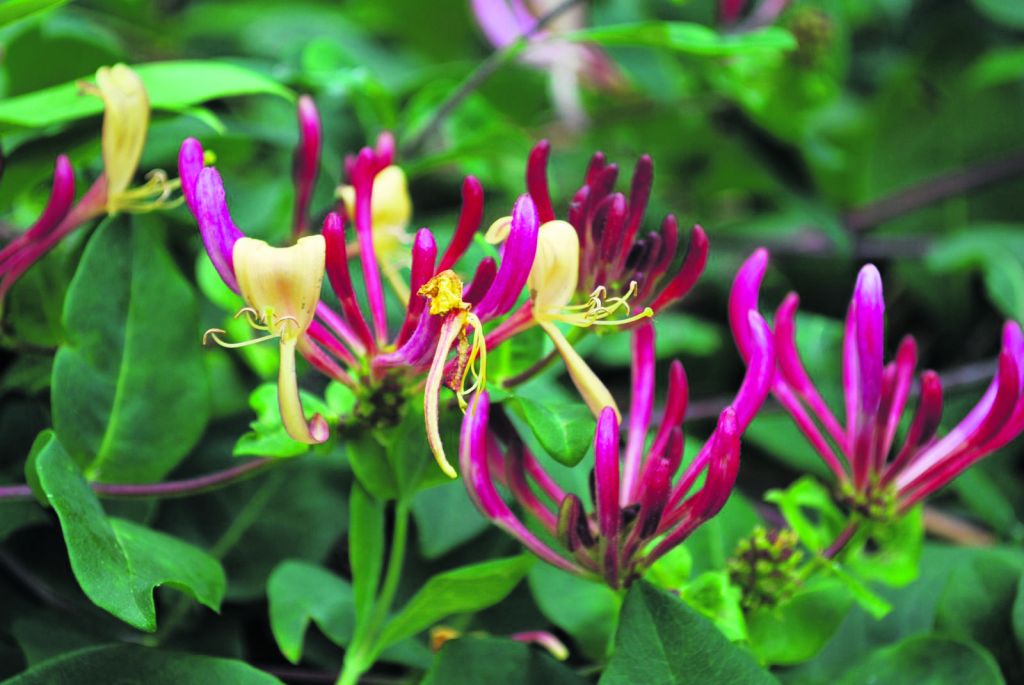

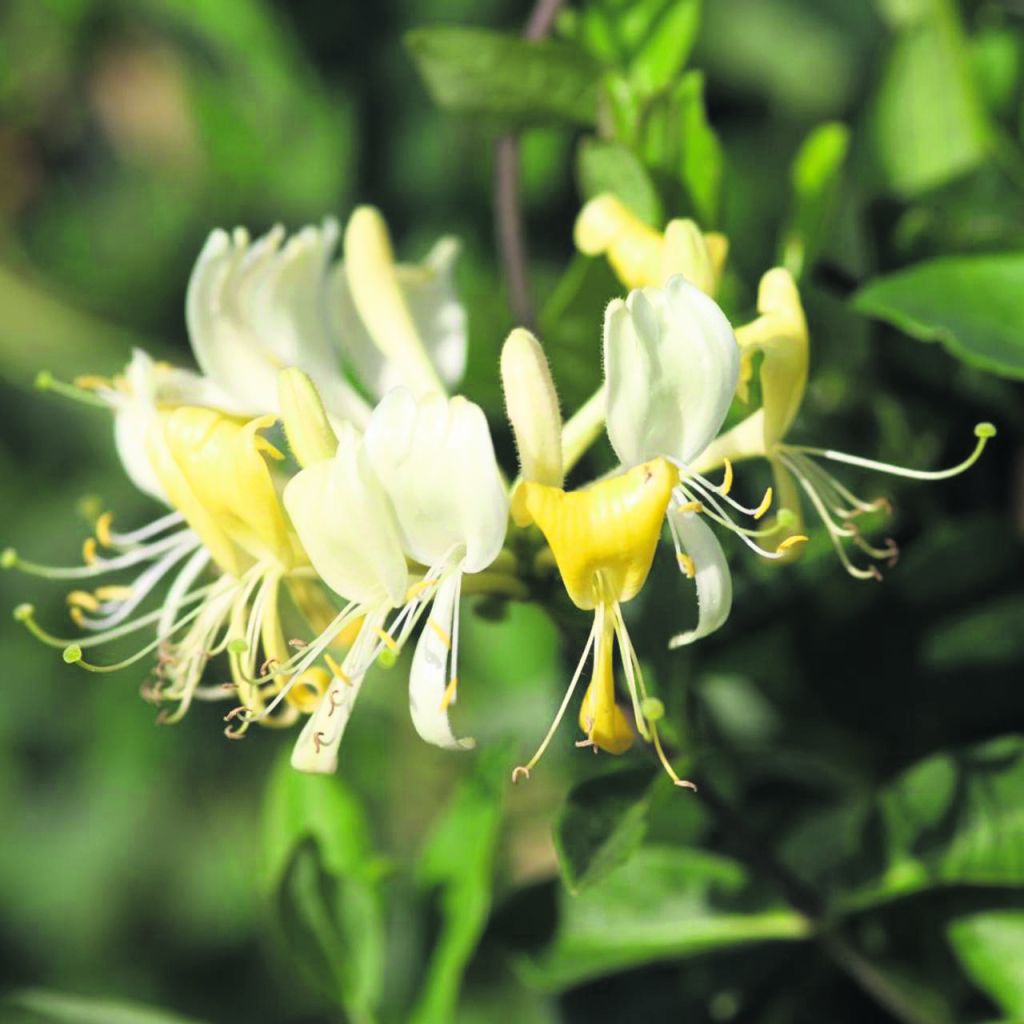
Best honeysuckle for fragrance
The scent of a honeysuckle’s flowers wafting through the air on a summer’s evening is something special. While many honeysuckles are scented, boasting delicate notes of vanilla, jasmine and orange blossom, some varieties are known to have a particularly fragrant aroma.
Both ‘Sweet Sue’ and ‘Heaven Scent’ could justifiably claim the title of being the best honeysuckle for fragrance, the sweet bouquet of their blooms leaving a lasting impression on the nose without ever being overpowering. If fragrance is your planting priority, grow your honeysuckle over a seating area pergola to make the most of the smell.
Best honeysuckle for wildlife
The inviting trumpet shape and abundant nectar of the honeysuckle flower is known for attracting bees, butterflies (like the white admiral) and moths, while the autumn berries are a firm favourite of songbirds and dormice.
In fact, the Wildlife Trusts even go so far as to refer to honeysuckles as wildlife ‘hotels’, though we’re yet to see them produce any fancy mini toiletries we can pilfer, so the jury’s still out on that front.
Ultimately, most honeysuckles are good for wildlife, so you don’t need to worry too much about specific varieties, just know that, by getting a honeysuckle, you’re doing your bit to encourage more wildlife to visit your garden.


